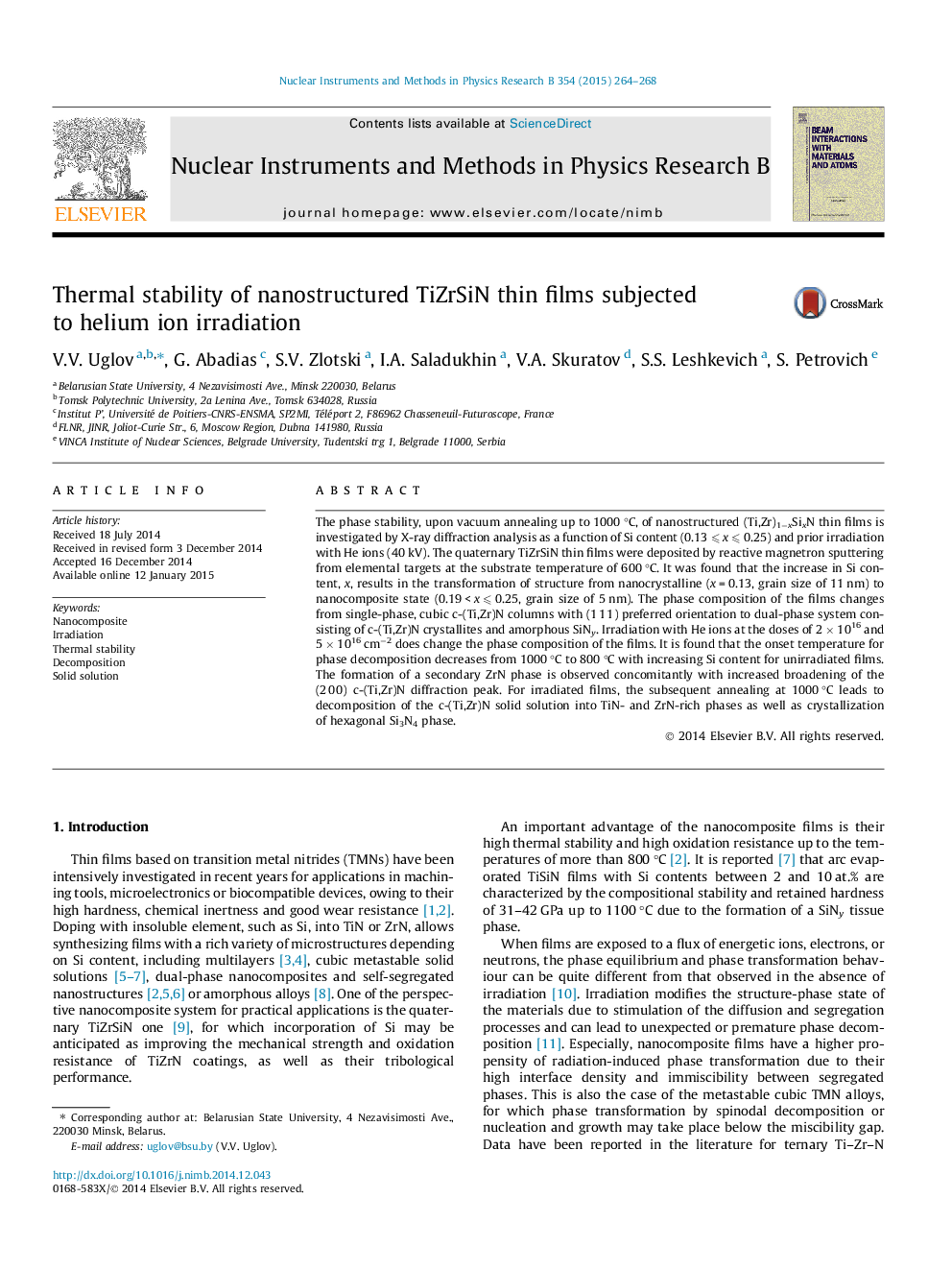| Article ID | Journal | Published Year | Pages | File Type |
|---|---|---|---|---|
| 8040951 | Nuclear Instruments and Methods in Physics Research Section B: Beam Interactions with Materials and Atoms | 2015 | 5 Pages |
Abstract
The phase stability, upon vacuum annealing up to 1000 °C, of nanostructured (Ti,Zr)1âxSixN thin films is investigated by X-ray diffraction analysis as a function of Si content (0.13 ⩽ x ⩽ 0.25) and prior irradiation with He ions (40 kV). The quaternary TiZrSiN thin films were deposited by reactive magnetron sputtering from elemental targets at the substrate temperature of 600 °C. It was found that the increase in Si content, x, results in the transformation of structure from nanocrystalline (x = 0.13, grain size of 11 nm) to nanocomposite state (0.19 < x ⩽ 0.25, grain size of 5 nm). The phase composition of the films changes from single-phase, cubic c-(Ti,Zr)N columns with (1 1 1) preferred orientation to dual-phase system consisting of c-(Ti,Zr)N crystallites and amorphous SiNy. Irradiation with He ions at the doses of 2 Ã 1016 and 5 Ã 1016 cmâ2 does change the phase composition of the films. It is found that the onset temperature for phase decomposition decreases from 1000 °C to 800 °C with increasing Si content for unirradiated films. The formation of a secondary ZrN phase is observed concomitantly with increased broadening of the (2 0 0) c-(Ti,Zr)N diffraction peak. For irradiated films, the subsequent annealing at 1000 °C leads to decomposition of the c-(Ti,Zr)N solid solution into TiN- and ZrN-rich phases as well as crystallization of hexagonal Si3N4 phase.
Related Topics
Physical Sciences and Engineering
Materials Science
Surfaces, Coatings and Films
Authors
V.V. Uglov, G. Abadias, S.V. Zlotski, I.A. Saladukhin, V.A. Skuratov, S.S. Leshkevich, S. Petrovich,
